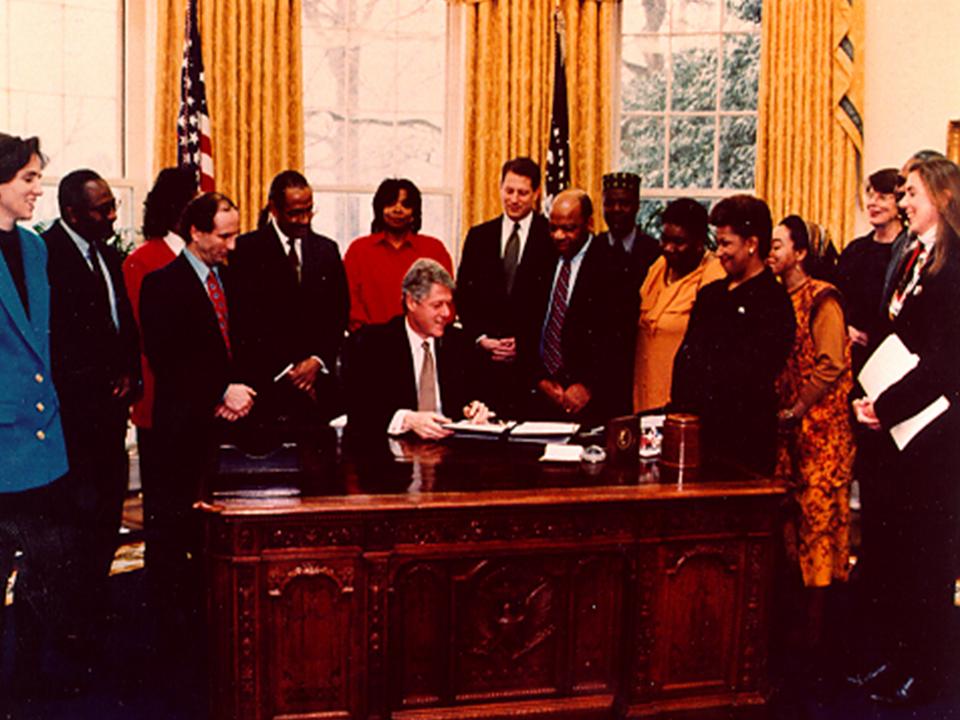Image from http://switchboard.nrdc.org/blogs/ahuang/president_clintons_executive_o.html
"Early 1960s - Farm workers organized by Cesar Chavez fight for workplace rights, including protection from toxic pesticides in California farm fields.The EJ movement is not finished yet. There is still work to be done. There are still areas like Mossville, LA, Rubbertown in Louisville, KY, Houston, TX, and Richmond, CA where minority and low income populations are subject to disproportionate levels of pollution. For example, you might have heard of the Keystone XL Pipeline. Many people are opposed to this project for climate change reasons, but for Native Canadians who live near the Tar Sands, this is an EJ issue. They are being exposed to oil spills and chemical pollution from tar sand extraction. I say this just to point out that pollution issues and EJ issues often go hand and hand. The pollution has to go into someone's back yard. Unfortunately, these communities are often left to fend for themselves, but if we all lend a hand, maybe things will start to change. Remember the wind and rivers unite us all.
1962 - Rachel Carson's Silent Spring details the harmful effects of pesticides on the environment.
1964 - Civil Rights Act of 1964 passed. The law's "Title VI" -- prohibiting use of federal funds to discriminate based on race, color and national origin -- will become an important tool in environmental justice litigation.
1967 - African-American students take to the streets of Houston to oppose a city dump that had claimed the lives of two children.
1969 - Lawsuit filed on behalf of six migrant farm workers by California Rural Legal Assistance plays a role in the ban on the pesticide DDT in the United States.
1970 - U.S. Environmental Protection Agency established to enforce laws that protect human health and safeguard the natural environment.
1971 - President's Council on Environmental Quality acknowledges that racial discrimination negatively affects the quality of the environment for the urban poor.
1972 - The United States bans the use of the toxic pesticide DDT.
1973 - The EPA issues rules that phase out lead in gasoline over several years; lead levels in the air will fall by 90 percent.
1978 - Hundreds of families evacuated from Love Canal area of Niagara Falls, New York, due to rates of cancer and birth defects; toxic chemicals were buried decades before under neighborhood.
1979 - African-American community in Houston opposing a landfill brings first Title VI lawsuit challenging the siting of a waste facility."

No comments:
Post a Comment